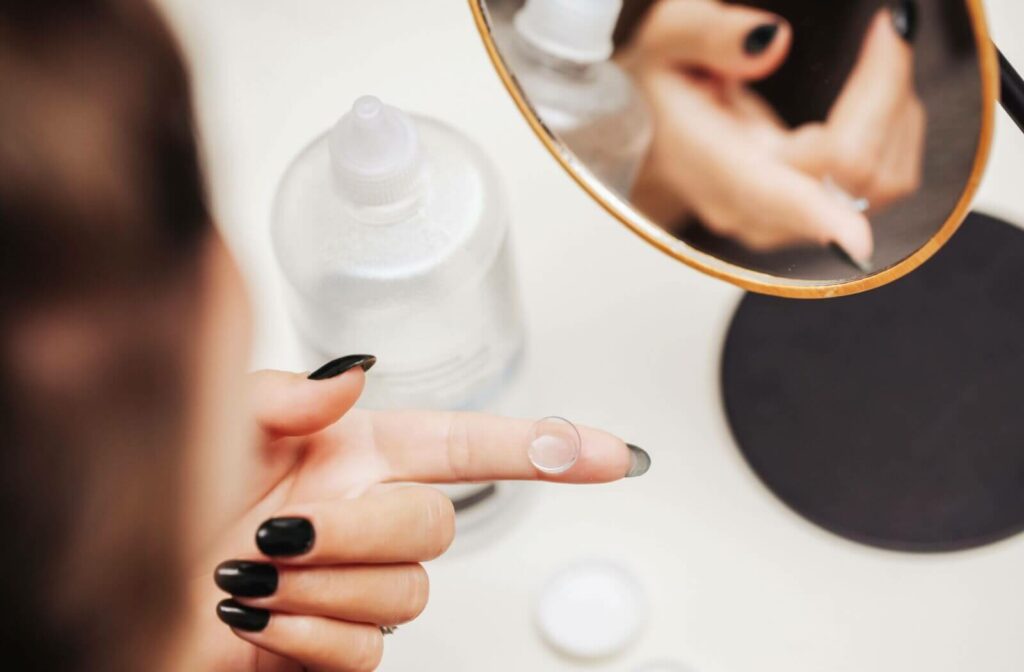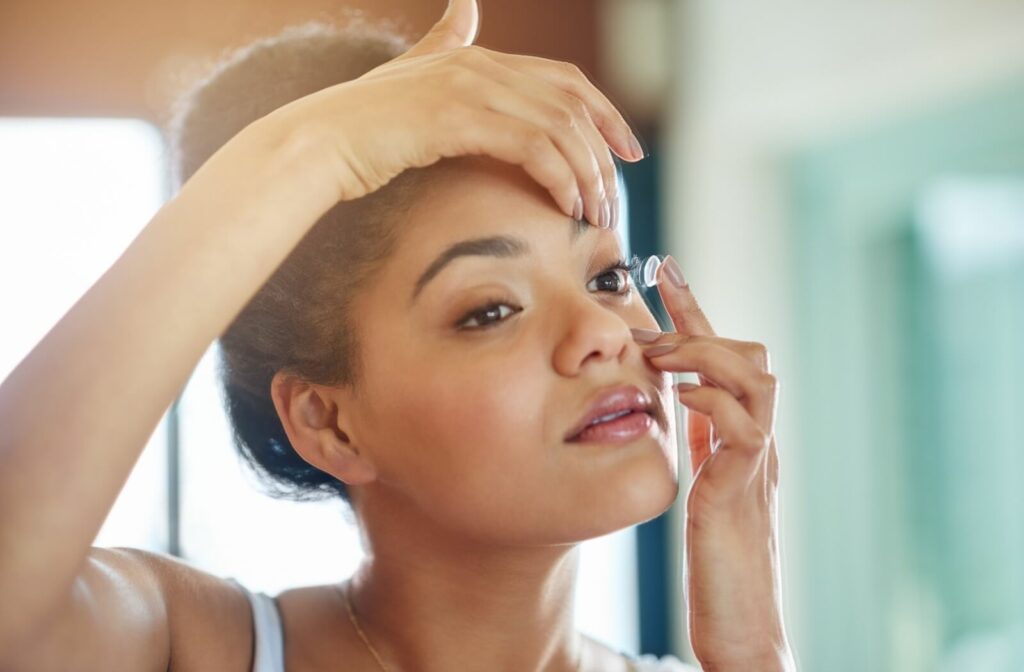Vision correction is a fascinating field that has dramatically evolved over the years, offering people more choices than ever before. Among the most popular options today are contact lenses—small, thin lenses placed directly on the eye’s surface to correct vision.
Whether you’re nearsighted, farsighted, have astigmatism, or are experiencing age-related vision changes like presbyopia, contact lenses can be a convenient and effective solution. But how exactly do they work?
Contact lenses work by sitting directly on the surface of your eye and correct vision by refracting and focusing light onto the retina, similar to how glasses work. The lenses are designed to match the curvature of your eye, allowing them to move naturally with your eye movements. They come in various materials and designs to correct different vision problems—it all starts with a contact lens fitting appointment.
A Brief History of Contact Lenses
The concept of contact lenses dates back to the 16th century when Leonardo da Vinci sketched a device meant to be worn over the eye to alter vision. Fast forward to 1887, and a German glassblower, F.E. Muller, crafted the first glass contact lens.
However, it wasn’t until the mid-1900s that these lenses became widely practical with the advent of soft lenses. Today, contact lenses are made from a variety of materials, offering a range of options tailored to individual needs.
Types of Contact Lenses
Contact lenses can be broadly classified into 2 categories: soft lenses and rigid gas-permeable (RGP) lenses.
- Soft lenses: Made from gel-like, water-containing plastics, these lenses are comfortable and flexible, making them the most popular choice. They come in various forms, including daily disposables, bi-weekly, and monthly replacements.
- Rigid gas-permeable lenses: While less common, RGP lenses provide sharper vision and are more durable. They are particularly useful for complex prescriptions and can last longer than soft lenses.
- Specialty lenses: These include toric lenses for astigmatism, multifocal lenses for presbyopia, and coloured lenses for cosmetic changes.
How Contact Lenses Correct Vision
To understand how contact lenses work, it’s essential to grasp the basic concept of refractive errors—conditions where the shape of your eye prevents light from focusing directly on the retina. Here’s how contact lenses address these issues:
- Myopia (nearsightedness): With myopia, the eyeball is too long, causing light to focus in front of the retina. Contact lenses help by diverging light rays, allowing them to focus on the retina directly.
- Hyperopia (farsightedness): Here, the eyeball is too short, and light focuses behind the retina. Contact lenses counteract this by converging light rays to the correct focal point.
- Astigmatism: This condition is due to an irregularly shaped cornea or lens. Toric lenses, specially designed for astigmatism, have different optical powers and focal lengths to adjust for the irregular curve.
- Presbyopia: With age, the eye’s lens loses flexibility, making it hard to focus on close objects. Multifocal contact lenses offer different zones for varying distances, mimicking natural vision changes.
Choosing the Right Contact Lenses
Selecting the right contact lenses involves considering several personal factors, including your lifestyle, vision needs, and comfort preferences. Here are some practical tips:
- Consultation: Always start with a comprehensive contact lens exam and fitting by an optometrist. They can assess your vision needs and recommend the best lens type.
- Comfort: Consider how often and how long you plan to wear your lenses. Daily disposables might be ideal for occasional wearers, while extended-wear lenses could suit those who need all-day correction often.
- Budget: Costs can vary depending on the type and brand of lenses. Evaluate your budget alongside your vision requirements to find a suitable option.

Maintaining Your Contact Lenses
Proper maintenance of contact lenses is important for eye health and lens longevity. Here are some essential care tips:
- Cleaning: Always wash your hands before handling your lenses. Use appropriate cleaning solutions to rinse and store them.
- Storage: Keep lenses in a clean lens case, replacing the case every few months to prevent bacterial buildup.
- Adherence to schedule: Follow the replacement schedule recommended by your optometrist to avoid discomfort and potential eye infections.
The Role of Optometrists
Contact lenses are medical devices that require a proper fit and ongoing care. Consulting with an optometrist means your lenses can not only correct your vision effectively but also maintain your eye health. They can help you navigate the plethora of options, including specialty lenses, and provide personalized care instructions.
Get Fitted for Contact Lenses Today
Contact lenses are a versatile and effective solution for correcting various refractive errors. Understanding their function and caring for them properly will help you make the most of this vision correction option. Always prioritize professional advice and regular checkups to maintain optimal eye health.
Don’t wait to prioritize your eye health—schedule your appointment with White Oaks Optometry today and take the first step toward clearer, healthier vision. Call us now or visit our website to book your appointment. Your eyes deserve the best care, and we’re ready to help.



